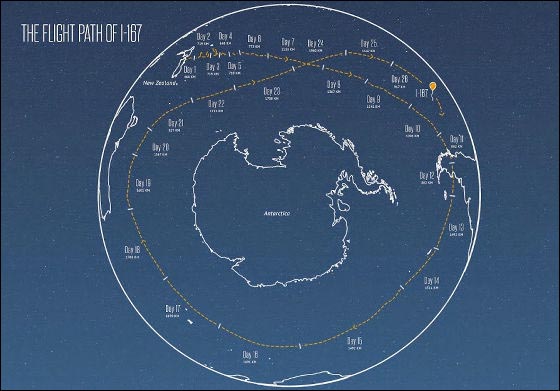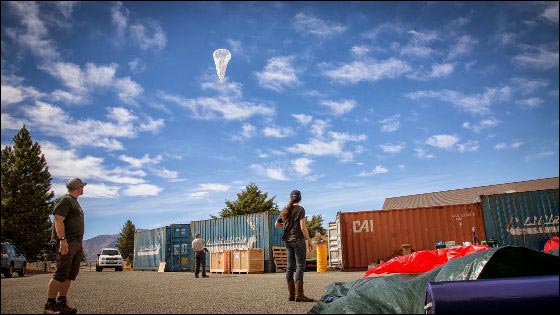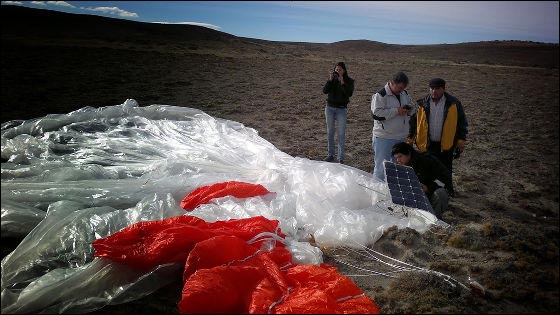About 1 year since the flight began, Google's balloon net project "Loon" reported on the blog

Google FiberGoogle provides affordable high speed ground line at Google, a project to supply Wi - Fi using a balloon "Loon (Rune)"We also provide communication lines from remote skies. In the Loon blog of Google+, we will soon be reporting on Loon about one year from the start of the project.
Project Loon - Google+ - One of our balloons has had quite a journey over the past ...
https://plus.google.com/+ProjectLoon/posts/bWn1HJmyqLk
Exclusive: Google's Project Loon tests move to LTE band in Nevada | PCWorld
http://www.pcworld.com/article/2145500/exclusive-googles-project-loon-tests-move-to-lte-band-in-nevada.html
About a couple of weeks ago, Google reported on a blog that one balloon of Project Loon made a round of the earth over 22 days and achieved a memorable 500,000 km of the total flight distance of the project. The balloon successfully ridden into the westerly wind blowing from Chile toward Argentina "Barking 40 degrees"While traveling through a strong wind area called the wind-flying distance, continuing energy-saving flight, he returned to New Zealand at takeoff point and began traveling on the" second lap ".

As a result of nearly a year of experiment, Google's Loon team has learned how to catch up with the airflow and save long distances in energy saving, and now it uses nearly triple the wind as compared with the start of the project It is supposed to be able to do. In the stratosphere and lower altitudes, the turbulence of the air current and wind is very complicated, and it is necessary to change the direction of the Loon balloon corresponding to the situation of the wind and the changing wind, so that the large amount of data collected so far By analyzing and building complex algorithms and making use of it, it is said that the flight route of Loon balloon can be accurately predicted.

The Loon balloon used sunlight as an energy source. At the beginning of the project, solar panels were installed near the top of the balloon at the beginning of the project, but because the sunlight is illuminated from the side in the vicinity of the pole, it captures the light well It turned out to be impossible. Currently, it seems that two solar panels are tilted to the side, so we catch sunlight efficiently, reduce loading batteries and refine energy saving performance.

In addition, Loon 's flight test has finally decided to advance to the United States of America' s weakest point. Google in September 2013Federal Communications Commission (FCC)We have applied for a wireless license in the desert area in the northern Nevada province and are 25 miles from the LTE base station shared by AT & T · Verizon · T - Mobile 's three major mobile communications companies, which is conditioned for approval Clear things done at places more than a distance away, and finally get to the verification testPC WorldIt reports.

Project Loon has been pursued for the purpose of providing a line in remote areas where the Internet infrastructure is not well established, and it is considered that the line to be offered is not so much speed sensitive. However, the circuit used in the test in Nevada proved publicBand (frequency band)Since LTE and WiMAX are included in the types, it is suggested that Loon may offer high-speed lines.

The sunlight drones Facebook was showing high interestSuccessful acquisition of Titan AerospaceWhether Google will use the Loon balloon and drone to dominate the "sky", it seems that it will be remembered in the future.
Related Posts:
in Note, Mobile, Web Service, Posted by darkhorse_log







